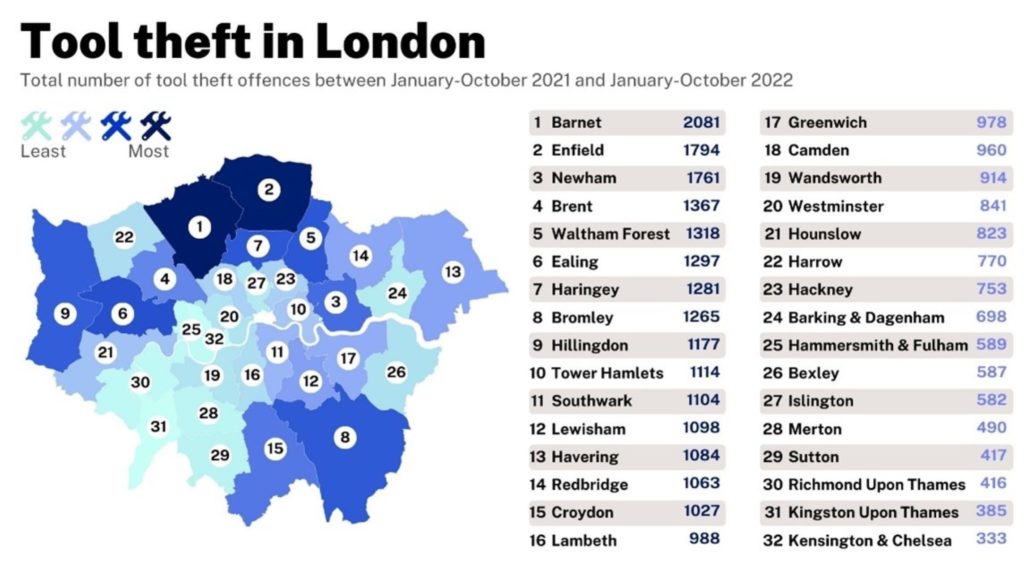There Are Already Hands-Free Cars Being Driven On UK Roads!
Thursday, 20. April 2023
Ford has introduced the first hands-off driver assistance system that can be used on motorways.
BlueCruise makes its debut on the Mustang Mach-E and is approved for use on UK roads by the Department for Transport (DfT).
It enables hands-free assisted driving at speeds of up to 80mph.
The system monitors road markings, speed signs and evolving traffic conditions to control steering, acceleration, braking and lane positioning, as well as to maintain safe and consistent distances to vehicles ahead – right down to a complete halt in traffic jams.
BlueCruise is classified as a Level 2 autonomous system and can be activated on 2,300 miles of pre-mapped motorways in England, Scotland and Wales, designated as Blue Zones. Drivers must remain attentive at all times and are monitored by an infrared camera continually.
If the system detects driver inattention, warning messages are first displayed in the instrument cluster, followed by audible alerts, brake activations, and finally slowing of the vehicle while maintaining steering control. Similar actions are performed if the driver fails to place their hands back on the steering wheel when prompted when leaving a Blue Zone.
Owners of 2023 Ford Mustang Mach-E vehicles in Great Britain are the first to be able to activate BlueCruise via subscription. The first 90 days are included with the vehicle purchase and, thereafter, a £17.99 monthly fee applies.
Ford engineers undertook 100,000 miles of testing on European roads to validate latest-generation advanced driver assistance systems including BlueCruise and its supporting features, in addition to over 600,000 miles covered in the US and Canada before the system was introduced to those markets last year.
Validation drives in Great Britain helped prove out the ability to handle circumstances drivers encounter every day, such as worn-out lane markings, poor weather and roadworks.
Torsten Wey, manager for advanced driver assistance systems at Ford Europe, said: “There’s a good reason why Ford BlueCruise is the first hands-free driving system to be cleared for use in a European country: We’ve proven beyond doubt that it can support the driver while also ensuring that they keep their eyes on the road for their safety and that of their passengers while the system is active. That means BlueCruise can make other road users’ journeys more comfortable too.”
Driver monitoring system
Thatcham Research vehicle technology specialist Tom Leggett says that before BlueCruise can be enabled, a driver monitoring system (DMS), using infrared cameras positioned in the instrument cluster, will ensure that the driver has their eyes on the road.
“Crucially, the driver is not permitted to use their mobile, fall asleep or conduct any activity that takes attention away from the road,” he explained.
“This demonstrates just how important DMS is, not only in enabling current assisted driving technology like BlueCruise but also as we move towards fuller levels of automation in the future.”
He explained: “Although the vehicle can help control speed and position in lane, the driver is still wholly responsible for safety.
“It’s therefore no surprise that Ford and other car makers are looking to introduce technologies like this ahead of ‘Level 3’ automated lane keeping systems, which have experienced lingering questions around liability especially.”
Because BlueCruise users remain responsible and liable, says Leggett, a lot of the legal and technical complexities of automation and self-driving have been avoided, while still offering drivers a beneficial comfort feature that can reduce fatigue on long, monotonous journeys.
He concluded: “We would expect car makers to ensure safe adoption by way of driver education and clear messaging in the vehicle manual and on the dashboard.”
As of January 2023, car manufacturers are able to seek type approval to launch Level 3 technologies with expanded self-driving capabilities at speed of up to 80mph.
The rules previously capped the use of such systems to 37mph, but were not adopted by the UK Government. Ministers gave the green-light to allow self-driving cars last August. By Graham Hill thanks to Fleet News























